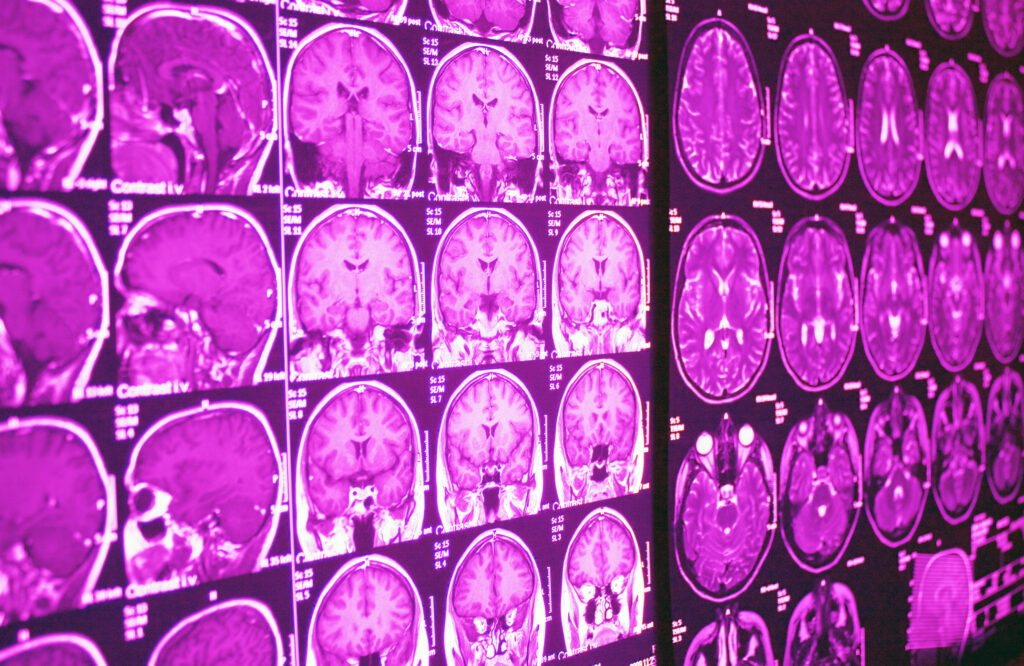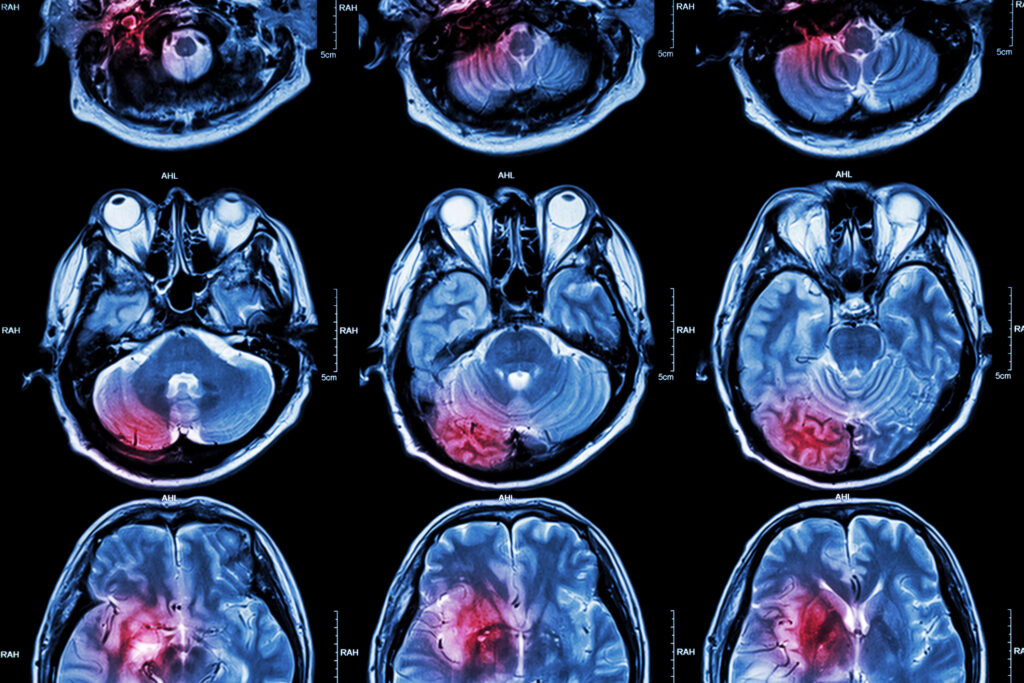Ultrasound technology has revolutionised medical imaging, becoming one of the most frequently used diagnostic tools worldwide. It is non-invasive, relatively cost-effective, and versatile, providing real-time images of soft tissues, blood flow, and organs. This article explores the historical development of ultrasound technology, its fundamental principles, applications across different medical fields, and the emerging innovations that continue to enhance its utility in modern healthcare. Furthermore, the article investigates the advantages and limitations of ultrasound, including its safety profile, technical constraints, and future directions in the medical field.
Introduction to Medical Ultrasound
Ultrasound, also known as sonography, has been a cornerstone of medical diagnostics since the mid-20th century. Unlike other imaging modalities, such as X-rays and CT scans, ultrasound uses high-frequency sound waves rather than ionising radiation to create images of internal body structures. The technique is well-suited for examining soft tissues and fluids and has been particularly impactful in fields such as obstetrics, cardiology, and musculoskeletal imaging.
The sound waves used in ultrasound imaging are typically in the range of 2 to 18 megahertz (MHz). These waves are transmitted into the body via a transducer, and the echoes reflected by different tissues are used to create an image on a monitor. This method allows for real-time visualisation of structures, making it ideal for dynamic studies like blood flow, fetal development, and organ function.
Historical Development of Ultrasound in Medicine
The use of ultrasound in medical imaging stems from principles initially explored in the 19th and early 20th centuries. Early experiments with sound waves were primarily in physics and engineering, focusing on applications such as submarine detection during World War I. In the 1950s, pioneers such as Dr Ian Donald in obstetrics and gynaecology recognised the potential of ultrasound in medical procedures.
Early ultrasound devices were bulky and provided low-resolution images. However, with advances in computer technology, the quality of imaging and the functionality of ultrasound machines have improved dramatically. By the late 20th century, ultrasound had become an essential diagnostic tool, evolving from simple two-dimensional (2D) images to three-dimensional (3D) and four-dimensional (4D) dynamic imaging.
Basic Principles of Ultrasound Technology
At its core, ultrasound in medical imaging is based on the reflection of sound waves off body tissues. The key components of the ultrasound system include a transducer, which emits the sound waves and captures the returning echoes, and a computer that processes the data to form an image.
The Transducer
The transducer plays a central role in ultrasound technology. It contains piezoelectric crystals, which vibrate when an electric current passes through them, generating sound waves. When these waves hit a boundary between different tissues—such as the transition from muscle to bone or fluid—they reflect back to the transducer. The time it takes for the echoes to return and their intensity are used to calculate the depth and composition of the structure being examined.
Sound Wave Propagation and Echoes
The propagation of sound waves depends on the medium they pass through. Different tissues in the body have different acoustic impedances, which affect how much sound is reflected back to the transducer. For instance, fluid-filled structures, such as the bladder or blood vessels, allow sound waves to pass through with little reflection, appearing dark on the ultrasound image. In contrast, denser tissues, like bone or calcifications, reflect more sound and appear bright on the scan.
Image Formation
The computer processes the reflected echoes to create a two-dimensional grayscale image of the internal structures. In modern ultrasound machines, sophisticated software algorithms can generate three-dimensional reconstructions, allowing for more detailed assessments. Doppler ultrasound is a specialised form used to visualise blood flow, where the frequency shift of the sound waves, caused by moving blood cells, helps determine the velocity and direction of blood flow.
Applications of Ultrasound in Medicine
Ultrasound in medical imaging has a wide range of applications, spanning nearly all areas of medicine. Its non-invasive nature and ability to provide real-time imaging make it invaluable for diagnostic, therapeutic, and monitoring purposes.
Obstetrics and Gynaecology
One of the most well-known uses of ultrasound is in obstetrics, where it has transformed prenatal care. Ultrasound is employed to confirm pregnancy, estimate gestational age, monitor fetal development, detect congenital anomalies, and assess placental location. The introduction of 3D and 4D ultrasound has further enhanced prenatal imaging, allowing for detailed visualisation of the fetus and enabling earlier detection of abnormalities.
In gynaecology, ultrasound is used to assess the uterus, ovaries, and other pelvic structures, playing a crucial role in the diagnosis of conditions such as ovarian cysts, uterine fibroids, and ectopic pregnancies.
Cardiology
In cardiology, echocardiography (a specialised ultrasound of the heart) is used to assess heart function, evaluate blood flow, and detect structural abnormalities. It is an essential tool in diagnosing conditions such as heart valve disorders, cardiomyopathy, and congenital heart defects. Doppler ultrasound is often used in conjunction to assess the speed and direction of blood flow through the heart and vessels.
Abdominal Imaging
Ultrasound in medical imaging is frequently employed to examine abdominal organs such as the liver, kidneys, pancreas, and gallbladder. It is particularly useful in detecting gallstones, liver cirrhosis, and tumours. The non-invasive nature of ultrasound makes it an excellent option for patients requiring regular monitoring of chronic conditions.
Musculoskeletal Imaging
Musculoskeletal ultrasound is used to evaluate tendons, muscles, joints, and ligaments. It is commonly used in sports medicine to diagnose injuries such as tendon tears or ligament sprains. Ultrasound-guided injections have also become more prevalent, allowing for precise delivery of medication into affected areas.
Vascular Imaging
Ultrasound is a key tool in vascular imaging, particularly Doppler ultrasound, which helps visualise blood flow within arteries and veins. It is commonly used to detect blood clots (deep vein thrombosis), assess the severity of peripheral artery disease, and evaluate varicose veins. Ultrasound’s ability to image without ionising radiation is particularly beneficial for frequent follow-up studies in vascular patients.
Emergency and Critical Care
In emergency and critical care settings, ultrasound has become an essential tool due to its portability and rapid imaging capabilities. Focused assessment with sonography for trauma (FAST) is a common ultrasound protocol used in trauma situations to detect internal bleeding or organ damage quickly. Point-of-care ultrasound (POCUS) is increasingly used by emergency physicians for immediate diagnosis and management of a wide range of conditions, from cardiac arrest to pneumothorax.
Advantages of Ultrasound Imaging
Ultrasound offers numerous advantages over other imaging modalities, contributing to its widespread use in medicine.
Non-Invasive and Safe
One of the primary benefits of ultrasound is its safety profile. Unlike imaging techniques that use ionising radiation (e.g., X-rays or CT scans), ultrasound poses no radiation risks, making it especially suitable for pregnant women, children, and patients requiring multiple follow-up scans. Its non-invasive nature allows for painless procedures, often without the need for sedation or contrast agents.
Real-Time Imaging
Ultrasound provides real-time imaging, making it ideal for dynamic studies such as observing fetal movements, assessing heart function, or visualising blood flow. This capability is critical in situations where immediate decisions are required, such as during surgery or trauma care.
Cost-Effective and Portable
Compared to other imaging techniques, ultrasound is relatively inexpensive. Its affordability and portability have allowed it to be used widely in various healthcare settings, from large hospitals to small clinics and even remote areas. Portable ultrasound machines have expanded the use of ultrasound in resource-limited settings and during emergencies, providing critical diagnostic capabilities where other imaging technologies may be unavailable.
Guidance for Procedures
Ultrasound is frequently used to guide minimally invasive procedures, such as needle biopsies, catheter placements, and joint injections. Real-time visualisation improves the accuracy of these procedures, reduces complications, and enhances patient outcomes.
Limitations of Ultrasound Imaging
While ultrasound has many advantages, it also has limitations that need to be considered when using it.
Limited Penetration and Resolution
Ultrasound is most effective in imaging soft tissues and fluid-filled structures but has limitations when it comes to visualising dense tissues like bone or structures located deep within the body. Additionally, ultrasound’s resolution is generally lower than that of other imaging modalities, such as MRI or CT, which can make it challenging to detect small or subtle abnormalities.
Operator Dependency
The quality of ultrasound images can be highly dependent on the skill and experience of the operator. Training and expertise are crucial to obtaining accurate and diagnostic-quality images. This operator dependence can introduce variability in the quality of scans, potentially leading to differences in interpretation.
Artefacts and Noise
Ultrasound images are susceptible to artefacts, which are distortions that can misrepresent the true structure of the tissue being imaged. Common artefacts include shadowing, where dense structures block the sound waves, and enhancement, where fluids cause an increase in the brightness of the image. These artefacts can complicate the interpretation of images, particularly for less experienced practitioners.
Emerging Innovations in Ultrasound Technology
Advances in ultrasound technology continue to enhance its diagnostic capabilities, making it an even more valuable tool in modern medicine. Several innovations are currently shaping the future of ultrasound imaging.
3D and 4D Ultrasound
The development of 3D and 4D ultrasound has allowed for more detailed imaging, particularly in obstetrics and gynaecology. These technologies provide enhanced views of fetal anatomy and allow clinicians to visualise movements in real-time. Beyond obstetrics, 3D ultrasound is being used to assess complex structures, such as the heart valves and facial anatomy. This is especially valuable when identifying facial bone abnormalities that may be associated with congenital syndromes, where early imaging plays a role in planning for potential surgical or supportive interventions. This added dimensionality improves the accuracy of diagnosis and allows clinicians to communicate findings more clearly to patients, especially in complex or rare cases.
Contrast-Enhanced Ultrasound (CEUS)
Contrast-enhanced ultrasound (CEUS) is another emerging technology that is gaining traction in various fields of medicine. CEUS involves the use of microbubble contrast agents, which are injected into the bloodstream to enhance the visualisation of blood flow and vascular structures. This technique is particularly useful in detecting liver lesions, characterising tumours, and evaluating organ perfusion.
Unlike the contrast agents used in CT and MRI, the microbubble contrast used in CEUS does not contain iodine or gadolinium, making it a safer option for patients with kidney impairment or allergies. CEUS is also less expensive and more readily available, and the lack of radiation exposure remains a significant advantage over other contrast-enhanced imaging modalities.
Elastography
Elastography is a relatively new ultrasound-based technique that measures the stiffness or elasticity of tissues, providing additional diagnostic information beyond conventional imaging. This is particularly useful in the assessment of liver fibrosis, where increased stiffness can indicate advanced liver disease. Elastography is also being applied in the evaluation of breast and thyroid nodules, as well as musculoskeletal conditions.
By quantifying tissue stiffness, elastography allows for earlier detection of pathology and can reduce the need for more invasive procedures such as biopsies. In some cases, it can also help in monitoring disease progression and evaluating the effectiveness of treatment.
Artificial Intelligence and Machine Learning in Ultrasound
Artificial intelligence (AI) and machine learning (ML) are beginning to play a significant role in medical imaging, and ultrasound is no exception. AI algorithms can assist in the interpretation of ultrasound images by detecting patterns that may not be visible to the human eye, thereby improving diagnostic accuracy and reducing operator dependence. For example, AI-powered systems can automatically measure fetal parameters, detect cardiac anomalies, or analyse liver stiffness in elastography studies.
In the future, AI-driven ultrasound devices may become more autonomous, allowing for greater consistency in image acquisition and interpretation. This could be particularly beneficial in resource-limited settings, where access to highly trained sonographers may be limited. AI could also help in screening large populations for conditions such as liver disease or cardiovascular abnormalities, improving early detection rates.
Miniaturisation and Wearable Ultrasound
As technology advances, ultrasound devices are becoming smaller and more portable, with some even reaching the size of a smartphone. Handheld ultrasound devices are revolutionising point-of-care diagnostics, particularly in emergency medicine, where rapid, portable imaging can be life-saving. These devices are also proving valuable in rural or remote areas, where access to full-sized imaging equipment may be limited.
Wearable ultrasound technology is also being explored, particularly in monitoring chronic conditions. For example, research is underway to develop wearable ultrasound patches that could continuously monitor cardiac function, blood flow, or other physiological parameters in real time. This could have profound implications for patients with chronic conditions such as heart failure, where continuous monitoring could help detect early signs of deterioration.
Safety and Bioeffects of Ultrasound
One of the most notable features of ultrasound is its excellent safety profile, particularly when compared to other imaging modalities like CT or X-ray, which use ionising radiation. This makes ultrasound the imaging method of choice in populations where minimising exposure to radiation is critical, such as in pregnant women and children.
Thermal and Mechanical Effects
Although ultrasound is generally considered safe, it is not entirely without bioeffects. The two primary types of bioeffects associated with ultrasound are thermal and mechanical. Thermal effects occur because the sound waves used in ultrasound can generate heat as they pass through tissues. This heating is usually minimal and is generally not of concern in diagnostic ultrasound. However, in certain cases, such as prolonged imaging of sensitive tissues (e.g., fetal brain or eyes), caution is advised to limit unnecessary exposure.
Mechanical effects refer to the physical forces generated by ultrasound waves, such as cavitation, which is the formation of tiny bubbles in tissues. Diagnostic ultrasound operates at power levels that are well below those needed to induce cavitation, making this effect of little concern in routine clinical use.
Guidelines and Monitoring
To ensure patient safety, regulatory agencies such as the U.S. Food and Drug Administration (FDA) and the International Society of Ultrasound in Obstetrics and Gynecology (ISUOG) have established guidelines for the safe use of ultrasound. These guidelines include recommendations for maximum exposure times, particularly in sensitive populations such as pregnant women. Additionally, ultrasound machines are equipped with safety indices, such as the thermal index (TI) and mechanical index (MI), which help operators monitor the energy output of the machine and adjust settings to ensure safe imaging practices.
Ongoing research continues to evaluate the long-term safety of ultrasound, particularly with newer techniques such as elastography and contrast-enhanced ultrasound. To date, the consensus remains that ultrasound is one of the safest imaging modalities available, provided that it is used appropriately and within established guidelines.
Challenges in Implementing Ultrasound in Resource-Limited Settings
While ultrasound is widely used in high-income countries, its implementation in low- and middle-income countries (LMICs) presents several challenges. These include a lack of trained personnel, insufficient infrastructure, and financial constraints. However, the portability and relative affordability of ultrasound make it one of the most promising imaging modalities for expanding diagnostic capabilities in resource-limited settings.
Training and Education
One of the primary barriers to the widespread use of ultrasound in LMICs is the lack of trained sonographers and radiologists. Ultrasound is highly operator-dependent, and the quality of the images obtained can vary significantly based on the skill level of the user. In response to this challenge, various organisations and initiatives have developed training programs aimed at educating healthcare workers in the basics of ultrasound imaging. These programs range from short courses for primary care providers to more in-depth training for radiologists and sonographers.
Telemedicine and remote learning platforms are also being explored as ways to expand access to ultrasound education. In some cases, ultrasound images obtained by healthcare workers in remote locations can be transmitted to specialists for interpretation, allowing for more accurate diagnoses and reducing the need for patients to travel long distances for medical care.
Cost and Infrastructure
Although ultrasound machines are generally less expensive than other imaging modalities, the cost can still be prohibitive in resource-limited settings. Additionally, many healthcare facilities in LMICs lack the infrastructure needed to support ultrasound services, such as reliable electricity, maintenance services, and access to spare parts.
Innovations such as portable, battery-operated ultrasound machines are helping to overcome some of these barriers. These devices are particularly useful in rural or remote areas, where access to medical imaging has traditionally been limited. In some cases, non-governmental organisations (NGOs) and charitable foundations have stepped in to provide funding and resources for ultrasound machines and training programs in underserved regions.
Future Directions in Ultrasound
Ultrasound in medical imaging continues to evolve rapidly, with ongoing research and development aimed at improving image quality, expanding clinical applications, and increasing accessibility. Several key trends are likely to shape the future of ultrasound in medical imaging.
Fusion Imaging
One of the exciting developments in ultrasound is the integration of ultrasound with other imaging modalities, such as MRI or CT, in a technique known as fusion imaging. By combining the real-time capabilities of ultrasound with the detailed anatomical information provided by MRI or CT, fusion imaging allows for more accurate diagnosis and treatment planning, particularly in complex cases such as cancer or cardiovascular disease.
Fusion imaging is also being explored for guiding minimally invasive procedures, such as tumour ablation or biopsy. By providing clinicians with real-time feedback and precise anatomical information, this technology could significantly improve the safety and efficacy of these procedures.
AI-Driven Ultrasound
As mentioned earlier, artificial intelligence is likely to play an increasingly prominent role in ultrasound imaging. AI algorithms are being developed to assist with image acquisition, interpretation, and even decision-making. For example, AI-powered ultrasound machines could automatically adjust settings to optimise image quality, reducing operator dependency and improving the consistency of scans. AI could also help clinicians prioritise patients based on the severity of their findings, improving workflow efficiency in busy healthcare settings.
Ultrasound in Personalised Medicine
The future of ultrasound also lies in its potential role in personalised medicine. As technology advances, ultrasound could be used to monitor disease progression and treatment response in real-time, allowing for more tailored and precise interventions. For example, in cancer treatment, ultrasound could be used to guide the delivery of targeted therapies directly to tumours while monitoring the effects of the treatment in real-time. Similarly, ultrasound elastography could be used to monitor changes in tissue stiffness in response to therapy, providing an early indication of treatment success or failure.
Conclusion
Ultrasound has become an indispensable tool in modern medicine, providing safe, non-invasive, and real-time imaging across a wide range of clinical applications. From obstetrics and cardiology to musculoskeletal and emergency medicine, ultrasound’s versatility and safety have made it one of the most widely used diagnostic modalities in healthcare.
Despite its many advantages, ultrasound is not without limitations, such as its operator dependency and challenges in imaging dense or deep structures. However, ongoing innovations such as 3D and 4D imaging, contrast-enhanced ultrasound, and AI-driven technologies are helping to address these challenges and expand the capabilities of ultrasound in both diagnostic and therapeutic settings.
As ultrasound technology continues to evolve, it holds great promise for improving patient care, particularly in resource-limited settings and emerging fields like personalised medicine. By combining its established strengths with cutting-edge innovations, ultrasound is poised to remain at the forefront of medical imaging for years to come.
Disclaimer
The content provided in this article is for informational purposes only and is intended to support, not replace, professional medical advice, diagnosis, or treatment. While every effort has been made to ensure the accuracy and reliability of the information at the time of publication, Open Medscience makes no guarantees regarding the completeness or currency of the content.
Readers should consult qualified healthcare professionals for advice on specific medical conditions or procedures. The mention of particular technologies, products, or techniques does not constitute an endorsement by Open Medscience. Any reliance placed on the information in this article is strictly at the reader’s own risk.
Open Medscience shall not be held responsible for any loss, injury, or damage resulting from the use of or reliance on the material provided in this article.
You are here: home » diagnostic medical imaging blog »



